The PS5 , Sony’s next-generation gaming console, is finally here. Although it remains difficult to find right now – thanks to the pandemic, stock issues and chip shortages – many lucky gamers have managed to get their hands on one.
The PS5 brings you a whole new level of gaming excellence, which is in part due to the capabilities of the console's HDMI 2.1 port and cable. But what do you need to know about the best TVs and the PS5’s HDMI capabilities to get the most out of the new gaming system?
The PS5 is able to output in 8K at 60fps and supports games in 4K that are running at 60 or 120fps. However, it isn’t able to output games at 1440p resolution – at least not yet.
The PlayStation 5 uses an HDMI 2.1 connection, which is what allows next-gen consoles to support higher frame rates up to 120 frames per second (fps), and is far higher than the usual 60fps and 30fps frame rates seen on the last generation of consoles.
Not only does HDMI 2.1 allow for better frame rates, but it also means you can transfer any 4K or 8K images from your new console to your TV (if it can support those resolutions, that is). But one major caveat is that 8K gameplay will be limited to 60fps.
You might have noticed that some PS5 games , including Demon's Souls , offer different modes to either target higher graphical fidelity or better frame rates. Considering the PS5's capabilities, this means you could either play in 4K resolution at 60fps or in HD at 120fps, though the exact parameters of this will vary between each game.
There's a lot to untangle when it comes to HDMI connections on the PS5, which is why we've put together this guide. Help us sort through the details, explain what you really need to know and help you get the best out of your new console.
PS5 ports and cables: what's in the box?
Straight out of the box, Sony's PlayStation 5 comes with an HDMI 2.1 port at the back of the console and a matching cable.
Now, it's important to note that you will be limited by your TV's capabilities. If your TV doesn't support 4K resolutions, for example, you won't be able to play PS5 games in 4K, at any frame rate – likely making do with HD. You'll need an 8K TV for 8K gameplay, too, but there aren't really any 8K PS5 games in sight (at least not right now), so that's a problem for another day.
HDMI 2.1 cables still work in HDMI 2.0 ports, though, so you will be able to plug your PS5 in to a regular HDMI port and get a picture onscreen – just not at its max capabilities.
Since the PS5 doesn't support 1440p, the resolution of many gaming monitors and projectors, it seems likely that the graphics would instead default to 1080p, which means the PS5 won't benefit massively from a 1440p resolution monitor or screen.
HDMI 2.1 vs HDMI 2.0
Put simply, different HDMI standards support transmission of different quantities of data per second, which means audio and video quality varies between them.
The difference between HDMI 2.0 and 2.1 is pretty noticeable too. A PS5 game, running in 4K at 60fps (or 120fps) will look and play magnificently compared to 4K at 30fps.
If you're playing certain games on a TV which has an HDMI 2.0b port, though, you'll find that you can up the frame rate if you drop the resolution, say HD at 120Hz compared to 4K at 60fps. This does vary between games, though.
HDMI 2.1 removes this barrier, meaning you can play in Ultra HD quality while still having silky-smooth frame rates on your games.
PS5 HDMI capability
As we mentioned above, the PS5's HDMI cable and port are the HDMI 2.1 standard, which means the cable can transfer data much faster than a regular HDMI port.
To get into the specifics here, this means on a technical side that the PS5's 2.1 HDMI has a bandwidth of 48Gbps, which is almost three times more than a 2.0b.
This is what allows it to support 8K video at 60fps and 4K video at 60-120fps (depending on the game you're playing).
Let's take Spider-Man: Miles Morales on PS5 as an example here. The game is able to run on PS5 consoles at 4K/60fps – if your TV has an HDMI 2.1 port.
If, for example, you're playing the PS5 game on a 4K TV which has an HDMI 2.0b port – which is limited to an 18Gbps bandwidth – you'll be looking at gameplay in 4K still, but it will run at a maximum 30fps.
To put this simply, a PS5 hooked up to a TV with an HDMI 2.1 port should, in theory, give you the best results without having to sacrifice frame rate or graphical quality. But just because the console can allow 4K at 60fps doesn't mean your TV can.

HDMI support on TVs
Unless you're using a CRT from the late 90s, chances are your TV has an HDMI port.
It is important to note that while the new consoles use HDMI 2.1 as the connection, it doesn't mean your TV also needs to support HDMI 2.1.
Only brand new modern TVs and monitors are being shipped with HDMI 2.1 compatibility, and they are expensive and somewhat rare to find. Any 8K TV will ship with the newer HDMI standard, while this support varies between 4K TVs . Every Samsung QLED TV in 2020 comes with a single HDMI 2.1 port, whereas new LG OLED TVs ship with four HDMI 2.1 ports.
Full HD TVs and monitors, depending on their refresh rate, will be able to play games in 60fps or 120fps.
A good example to use here is the difference between Monster Hunter: World on PS4 and the PS5. With this game, performance has nothing to do with the HDMI cable but instead your TV's refresh rate.
Using a Full HD TV, with a refresh rate of 60Hz, you can play Monster Hunter World in a fixed, smooth 60fps on PS5 through the console's backwards compatibility.
If you played it on the same TV, using a current-gen PS4 or Pro, you won't hit 60fps because the console simply isn't powerful enough to do so. In this case, the HDMI port and cable won't matter.
Typically, modern TVs and monitors which run in Full HD (1080p) come outfitted with an HDMI 2.0 port, which means you'll have no problem enjoying PS5 games in wonderful quality and hitting 60 or 120fps if your TV allows.
It is then up to you which you prefer – higher frame rates or better visuals. This is what it ultimately comes down to.
In general, however, if you want the best results from your shiny new next-gen console, you'll want to have a TV which also supports the HDMI 2.1 connection so you can enjoy 4K gaming at a silky smooth 60 or 120fps.
We don't need a new iPad Pro in 2022
Pro gadgets are meant to be exciting, top-end products with flashy features and mind-bending specs, so it's a sad day when the suffix 'Pro' instead only inspires boredom or apathy.
That's the case with Apple's iPad Pro range, at least for this writer. While the first few generations of Apple's top-end tablet line were exciting, with huge screens, powerful processors, and accessories that made them portable workstation powerhouses, that's not enough anymore.
The iPad Pro (2020) and iPad Pro (2021) were both incremental upgrades over their predecessors, with barely any meaningful changes to inspire excitement in buyers, and that's why I don't think the iPad Pro (2022) should come along.
No, I think Apple should skip a year and wait for the iPad Pro (2023), so software can catch up and new technology can be introduced to make the device exciting.
What did you just say about the iPad Pro?
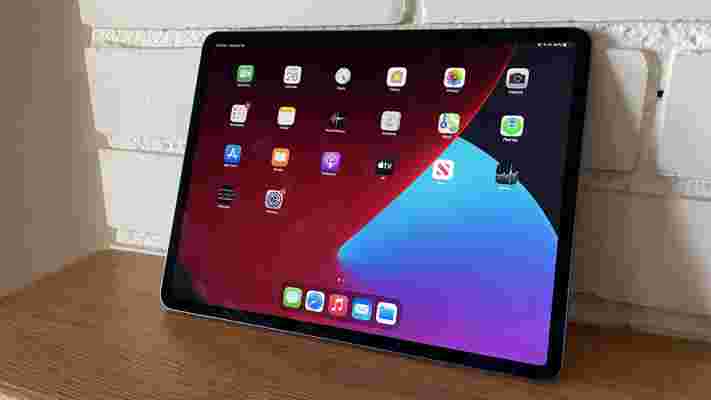
I don't think the last two generations of iPad Pro have been very exciting at all, despite the fact the newest one used Apple's super-powerful M1 chipset.
Why? Well, in a tablet, an M1 chipset and loads of processing power bring barely any advantages for average users.
Despite there being more power, there's still nothing to use that power on. The most power-intensive programs I've used, including editing apps like LumaFusion and games and streaming apps, work incredibly well on older tablets, making M1 redundant.
I still use LumaFusion on my iPad Pro 12.9 (2018) and it works quickly and easily - there's absolutely no reason to need an M1 chipset, even if it is more powerful.
That also applies for other changes like a LiDAR scanner on the back and 5G connectivity in certain 2021 iPad Pros. 5G networks are still so spread out and sporadic, and in some regions completely non-existent, that this innovation isn't too useful for tablets, and LiDAR is only useful to an incredibly small group of people, as it brings better depth-sensing than standard cameras.
One other headline feature was the mini LED screen, though this only came to the 12.9-inch version of the iPad Pro and not the 11-inch one. Honestly, the changes here are negligible unless you put the new slate alongside an older one - and even if it did reinvent display technology, a slightly different-looking screen isn't enough to sell a tablet anyway.
So despite these upgrades, the average users' experience with the iPad Pro hasn't changed over the last few years, and we need to wait for new apps that make the most of extra processing power, or a change in users' needs so that iPads become more vital.
Nothing new under the sun
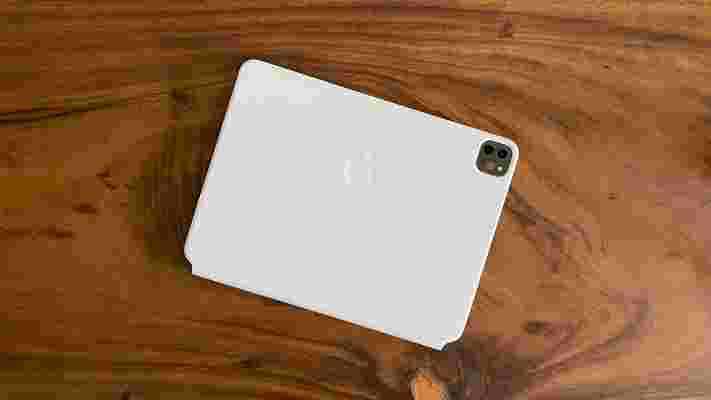
Tech doesn't move quickly. Just look at foldable phones as an example: the first was launched in 2019, and three years later, they're still only for a select few, with only one company seriously working in the space.
Brand-new must-have innovations don't come about every year either, which is why the phrase 'incremental upgrades' is used so much in tech - companies have convinced themselves that they need to put out a new device each year, despite the fact that most years there's nothing new to add, resulting in minimal upgrades and boring phones.
Apple doesn't need to release a new iPhone each year, either. Samsung doesn't need a new Galaxy S family every 12 months, and it's the same for every other company too.
However this article isn't about the consumer tech industry's anti-consumer churn, wherein it pumps out similar products and tries to convince you there's something new about them in a desperate attempt to make money. No, it's about iPad Pros.
Just as with other devices, we don't need to see iPad Pros each year, and if Apple waited two or more years between updates, we might see new iPads that are bigger changes from their predecessors.
Since the iPad Pro line debuted in 2015, we've only seen one year skipped so far, which was 2019, and the 2020 model wasn't that different from the 2018 one anyway. But with three generations of basically the same device now (as the 2018 one was a genuine reinvention of the 2017 issue) Apple really needs a change.
That's doubly the case now that the iPad Air 4 and iPad mini (2021) are rapidly catching up to the iPad Pro line in terms of design and display, so the top-level family is losing its edge.
As a consumer tech website, which can write articles about the newest tech and encourage you to buy it, a new iPad Pro for 2022 is no big issue for us. But as a tech fan, I've got to say: "Apple, give it a rest".
Fujifilm X-H2: everything we know so far
The long-awaited Fujifilm X-H2 has taken a significant step closer to its launch, with Fujifilm announcing that it'll be launching its new 5th generation X-series cameras at an X-Summit event in May. Fujifilm hasn't mentioned the X-H2 by name yet, but the rumors strongly suggest that the the X-H1's successor will arrive at that event.
So why the excitement about the X-H2? After all, the Fujifilm X-H1 has become something of a forgotten camera, despite its excellent specs. The main reason is because, as Fujifilm mentioned, it's expected to be the torch-bearer for Fuji's next-generation sensor and processor – and the rumors suggest that sensor will have a stacked design.
This is a big deal because the latest flagship full-frame cameras now sport stacked sensors – which bring the read-out speeds needed for fast burst shooting and 8K video – but it's not a feature that's generally found on lower-end cameras. High-end X-series models like the Fujifilm X-T4 aren't cheap, but they do pack pro-friendly power and features into smaller, more affordable bundles than their full-frame rivals.
So what other features will the Fujifilm X-H2 bring, and will it really arrive in two versions as the rumors suggest? We've rounded up all of the latest speculation here, along with our thoughts on what we'd like to see from one of the most exciting cameras of 2022.
Fujifilm X-H2 release date and price
It now looks almost certain that the Fujifilm X-H2 will be announced in May. In a YouTube video released on January 9, Fuji's Director of Business & Product Development, Yuji Igarashi, announced that the company's next X-Summit event will take place in May. And that "in 2022, the 5th generation X-series cameras will be announced".
That's an important distinction, as Fujifilm has only officially promised that its 5th-gen X-series cameras will arrive sometime this year. Still, reliable rumors sites like Fuji Rumors have concluded that the X-H2 will at least be announced in May – and will even arrive in two versions. Whether the X-H2 will actually be available to buy then, though, isn't yet known.
In terms of pricing, the latest speculation from Fuji Rumors suggests it'll "cost less than $2,500". This suggests it'll be pricier than the Fujifilm X-H1, which arrived for $1,899 / £1,699 / AU$2,700 (body only) back in 2018, although it's not yet clear whether this will be the case for both versions of the camera.
Still, a sub-$2,500 price tag (which likely works out to around £2,400 / AU$4,500 in real terms) would make the X-H2 cheaper than full-frame rivals with similar powers like 8K video. The full-frame Canon EOS R5 , for example, costs $3,899 / £4,199 / AU$6,899, while the Sony A7 IV is available for $2,499 / £2,400 / AU$$4,299 (body only). Neither of those cameras has a stacked sensor, either.
A higher price tag than the Fujifilm X-T4 ($1,699 / £1,549 / AU$2,999) also makes sense, although it seems likely that the X-H2 will be closer to that rumored sub-$2,500 figure.
Fujifilm X-H2 rumors and leaks
According to recent rumors, the Fujifilm X-H2 is shaping up to be a landmark camera that takes the X-series into a new generation of sensors and processors.
On August 26, Fuji Rumors confidently predicted that the X-H2 will have an X-Trans sensor rather than a Bayer design. Fuji's X-Trans sensors have a different 'color filter array' to the more common Bayer design, which produces some apparently unique characteristics.
Many Fujifilm fans claim that X-Trans sensors produce improved sharpness and better high ISO performance, but it's also true that X-Trans demosaicing (the process by which a color image is constructed from the sensor output) is more processor-intensive and can hit battery life.
Still, perhaps more important is the fact that the Fujifilm X-H2 could be the first camera to showcase a new stacked APS-C sensor. The company's latest 26.1MP BSI X-Trans CMOS 4 sensor, which we first saw on the Fujifilm X-T3 in 2018, has likely hit its limits. It's time for another leap forward if Fujifilm is to compete with full-frame cameras from Sony, Canon and Nikon.
On September 8, a report in Fuji Rumors suggested that the camera will be housing a 40MP sensor. Fujifilm also revealed at its last X Summit that a 'stacked' sensor design was on its way for the X-series – and that its next X Summit would take place in May 2022.
As we've seen on cameras like the Sony A1 , a 'stacked' design (which allows the sensor to have multiple layers of circuitry behind the photodiodes) can bring big potential benefits in areas like burst shooting, autofocus and video.
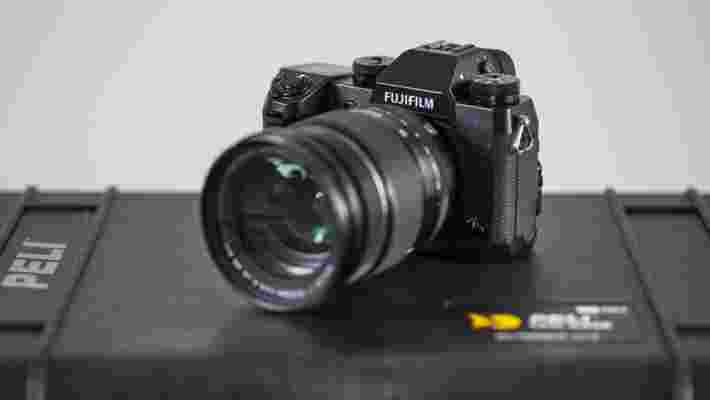
Also, in an Imaging Resource interview in 2020, Shin Udono (Fujifim's Senior Manager of Sales and Marketing), said that "we need some sort of breakthrough, probably" in order to separate the X-T line from the X-H series. He also agreed with a statement that the X-H series is where "new technology enters the product line".
While that could also refer to other features, like the X-H1's introduction of in-body image stabilization (IBIS) in Fujifilm cameras for the first time, there's a good chance that it's referring to a new sensor. Another reason to believe this is the apparent leak, picked up by EOSHD , of a new stacked APS-C Sony sensor that has a 43MP resolution and can shoot 8K video with 12-bit color depth – that puts it close to the 40MP rumor, too.
But we're still firmly in the realm of rumors here – and even if that Sony sensor leak is true, it's far from certain that Fujifilm would be able to use it in the X-H2 or other X-series cameras. As FujiAddict noted at the time of the leak, Sony could instead use this chip exclusively in its own APS-C Alpha cameras, which are also due an upgrade.
Still, the rumors that the X-H2 will introduce that now confirmed new sensor seem very likely. Fujifilm has admitted in its Fujicast podcast that the current 26MP sensor, seen in the recent Fujifilm X-E4 , is likely reaching the end of its life, so we can expect to see a new chip in the X-H2. But what other features would we like to see the camera bring?
It now seems increasingly likely that the X-H2 will arrive in two versions. On December 8 2021, Fuji Rumors said that "solid and reliable" sources had revealed that there will be two versions of the Fujifilm X-H2, one with a 40MP sensor and another with a 26MP sensor.
It's not year clear if both of these will be new sensors or, perhaps more likely, the 26MP model will have the current fourth-generation chip. This would certainly make it more affordable than the 40MP version, but would be an unusually complicated approach for Fujifilm.
Fujifilm X-H2: what we want to see
1. A higher-res EVF
One of the Fujifilm X-H1's strengths when it launched was its "brilliant viewfinder", as our review called its 3.69 million-dot OLED EVF. That said, as Fuji's expected flagship, we'd expect the X-H2 to take the EVF up a level again.
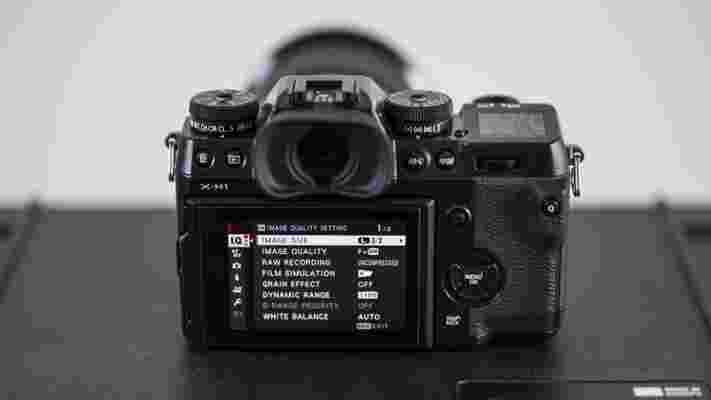
Viewfinders have now moved onto incredible 9.44-million dot monitors with 0.90x magnification, like the one seen in the Sony A1 . But perhaps more realistically, we'd like to see the Fujifilm X-H2 get a viewfinder like the one seen on the Sony A7R IV , which is a 5.76-million dot affair with 120fps refresh rate, which is handy for getting a smooth preview of fast-moving scenes.
2. A new battery
One feature that's almost guaranteed on the Fujifilm X-H2 is support for the new battery that Fuji introduced on the Fujifilm X-T4.
The Fujifilm NP-W235 is a larger-capacity battery than the older NP-W126S and on the X-T4 we found it was a significant step up, offering around 600-shots per charge.
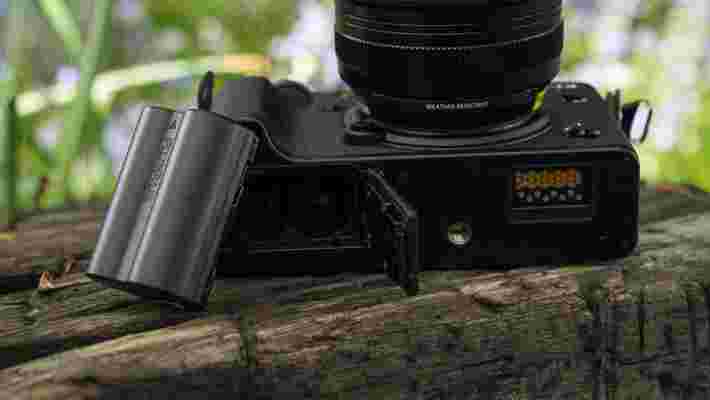
Strong battery performance is particularly important on hybrid cameras that shoot a mix of video and stills, which is what we're expecting from the X-H2 – and it'll also likely get a battery grip, either in the form of compatibility with the VPB‑XH1 or a new grip that can house an extra two batteries.
3. Powerful 8K video skills
The Fujifilm X-T4 is already a pretty powerful video camera that can shoot 4K/60p video – so we'd expect to the X-H2 to take that up another notch.
Whether than means 8K video, a rumor that's come from that potentially leaked 43MP Sony sensor, remains to be seen – but we'd certainly like to see a 6K video mode at least.
This would help provide some handy extra leeway, for example giving you the option of stabilizing a shaky video in post-production or creating over-sampled 4K footage that gets a lift in detail and sharpness.
But the latest rumors from April do suggest that a leap to 8K video is now looking the most likely, which would give videographers the option of cutting a single piece of footage into a few different 4K angles.
Perhaps even more important and helpful than a resolution boost would be a removal of video recording limits.
The Fujifilm X-H1 could only record continuously for 30 minutes at a time, so we'd like to see the X-H2 redesigned to manage heat better and allow the camera to match the impressive extended recording powers of cameras like the Sony A7S III .
This could be particularly challenging to achieve with the rumored X-Trans sensor, which tend to be more processor-intensive than a Bayer design, so we'll be interested to see if and how Fujifilm manages to achieve this.
4. Better ports
A couple of slight gripes we had with the Fujifilm X-H1 were its micro HDMI port, which tends to be less reliable than the full-size HDMIs seen on cameras like the Panasonic GH5, and the fact that its headphone jack was only available on its battery grip.
We'd like to see both of these things fixed on the X-H2, along with support for on-the-go USB-C charging and possibly even a CFexpress card slot, as previous rumors have hinted at.
5. Next-gen autofocus
Fujifilm's autofocus has improved a lot on recent cameras like the Fujifilm X-T4, which doubled the tracking success-rate of its predecessor and fine-tuned its Face / Eye AF performance. But it still lags behind the best AF performance we've seen from rivals like the Sony A6400 and Canon EOS R6 .
Sony has, in particular, really nailed autofocus performance in mid-range cameras, with impressively 'sticky' tracking and advanced Animal Eye AF a real boon for wildlife snappers, too.
We'd like to see the Fujifilm X-H2 introduce some next-gen AF performance that helps it at least draw level with similarly-priced rivals, as this would be a real boon for everything from portrait shooting to video.